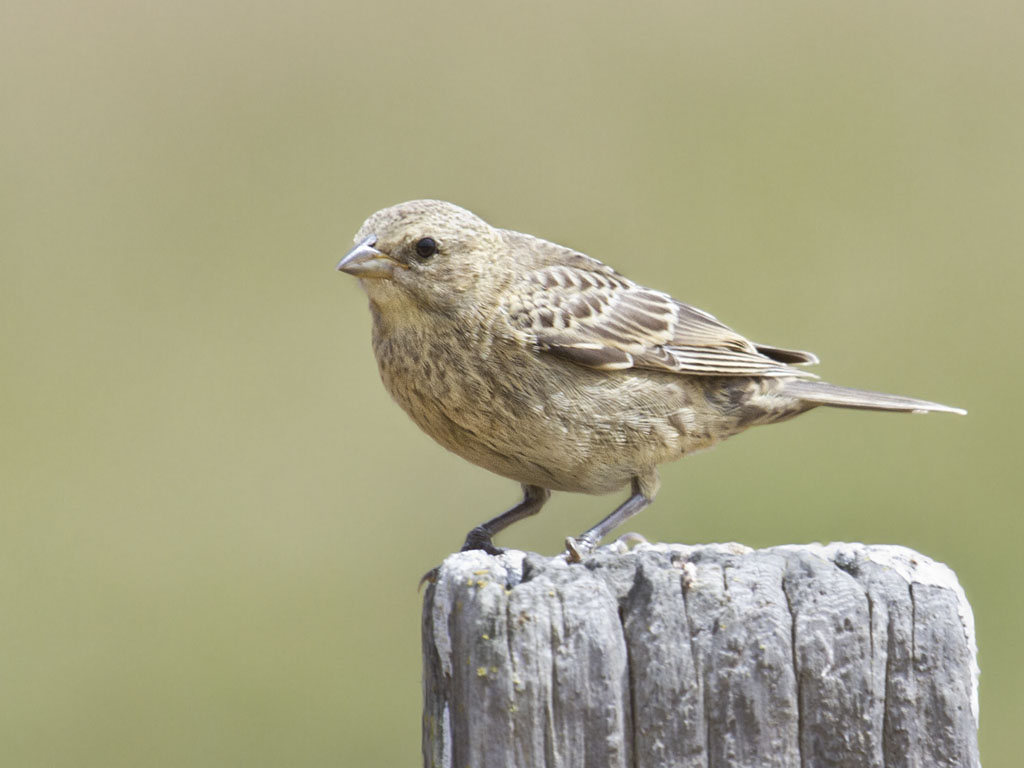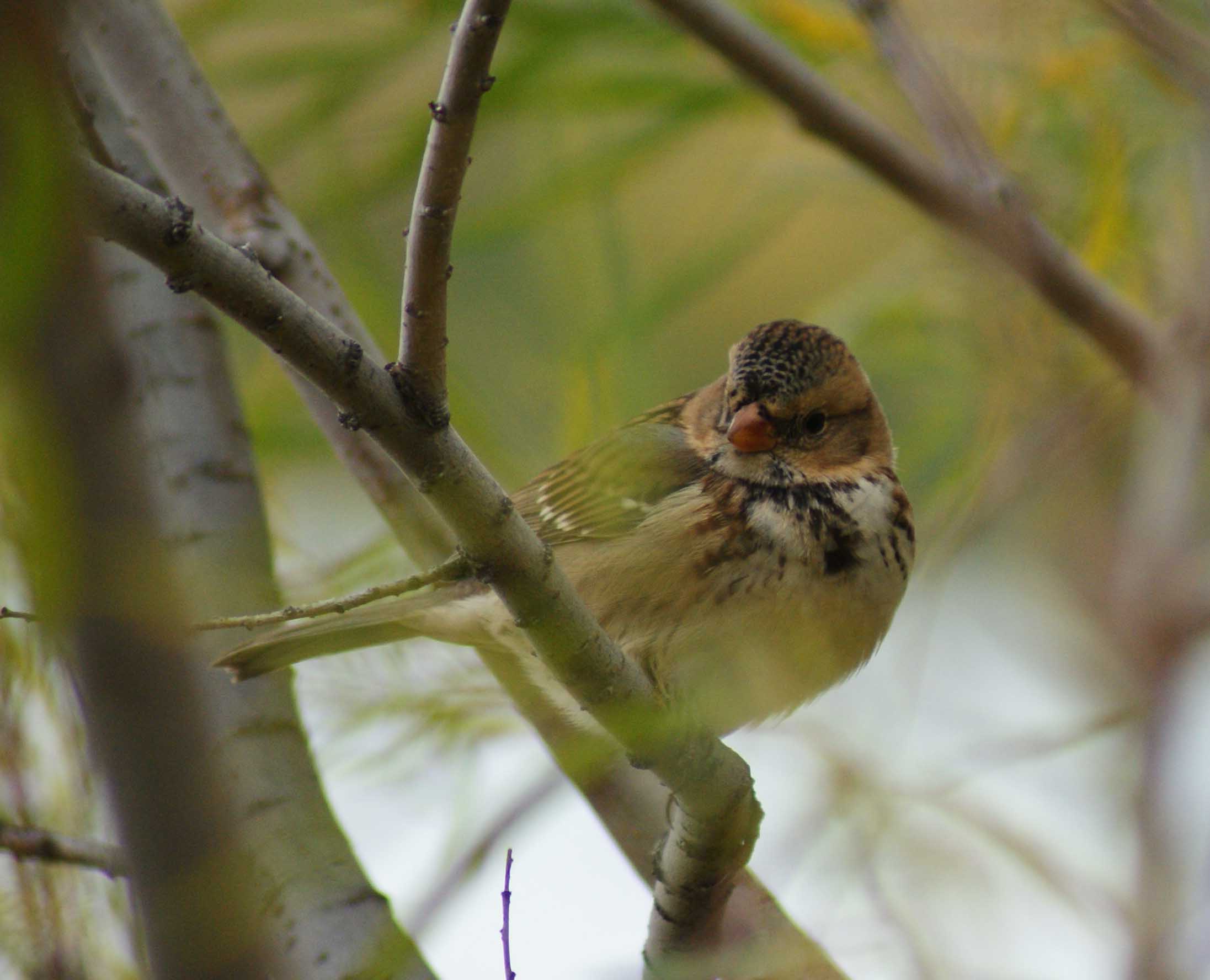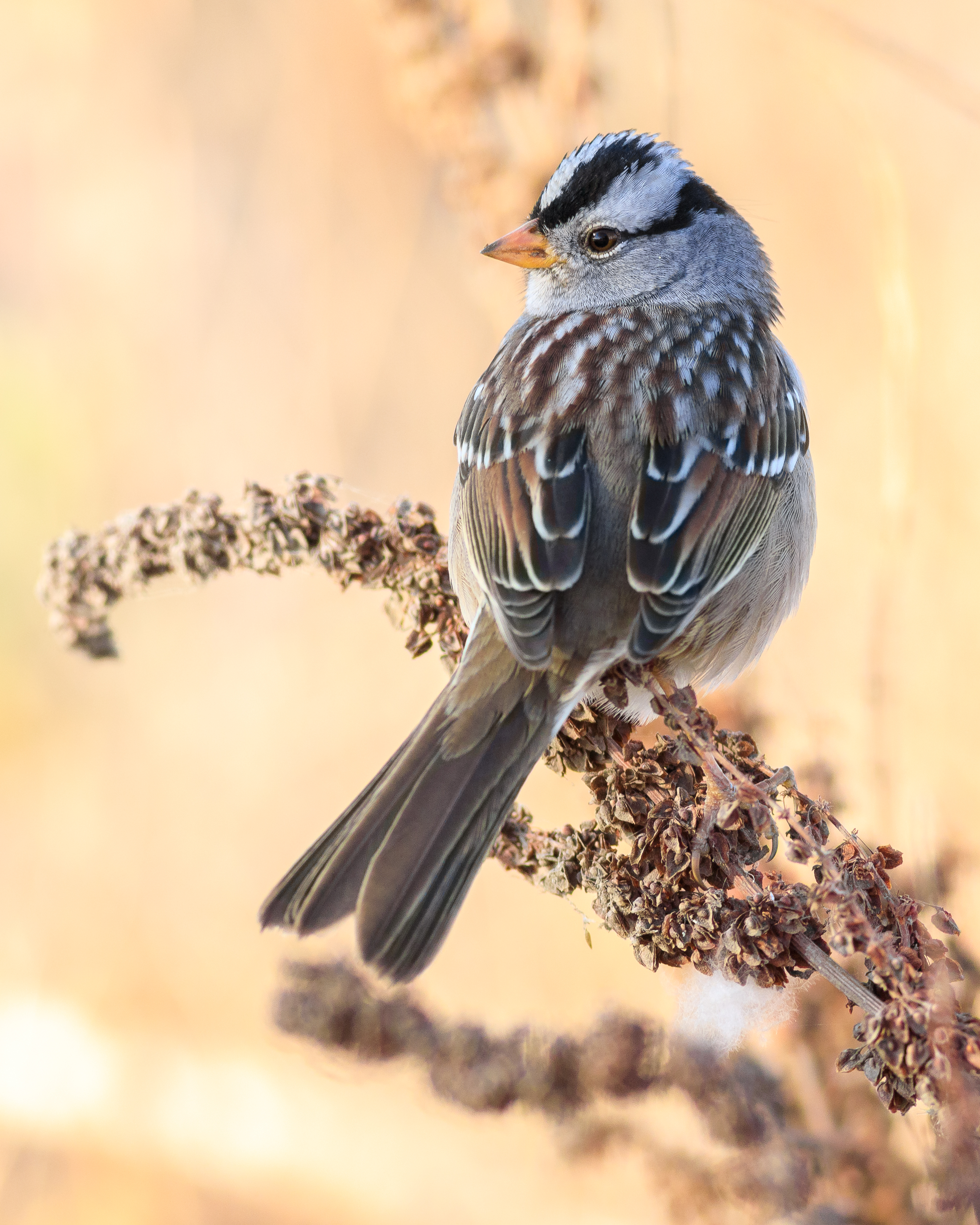|
Amelia Laskey
Amelia Rudolph Laskey (December 12, 1885 – December 19, 1973) was an American amateur naturalist and ornithologist noted for her contributions to the understanding of bird behavior. Though an autodidact without formal scientific training, Laskey made many original contributions to the field of ornithology and published in reputable scientific journals. Many publications refer to her as Mrs F.C. Laskey. Over the course of Laskey's career, her investigations included bird breeding behavior, nesting habits, territoriality, longevity, and migration. She was a regular participant in the National Audubon Society's Christmas Bird Count. Her scientific publications spanned 40 years, from 1933 to 1973, the year of her death, and included over 150 papers in ornithological journals. She banded 3,734 birds of 69 species. Laskey was also known for her rehabilitation of wounded birds. Early life and education Laskey was born Amelia Rudolph to German immigrant parents, Susan and Fra ... [...More Info...] [...Related Items...] OR: [Wikipedia] [Google] [Baidu] |
Ornithology
Ornithology is a branch of zoology that concerns the "methodological study and consequent knowledge of birds with all that relates to them." Several aspects of ornithology differ from related disciplines, due partly to the high visibility and the aesthetic appeal of birds. It has also been an area with a large contribution made by amateurs in terms of time, resources, and financial support. Studies on birds have helped develop key concepts in biology including evolution, behaviour and ecology such as the definition of species, the process of speciation, instinct, learning, ecological niches, guilds, island biogeography, phylogeography, and conservation. While early ornithology was principally concerned with descriptions and distributions of species, ornithologists today seek answers to very specific questions, often using birds as models to test hypotheses or predictions based on theories. Most modern biological theories apply across life forms, and the number of scientists w ... [...More Info...] [...Related Items...] OR: [Wikipedia] [Google] [Baidu] |
Cowbird
Cowbirds are birds belonging to the genus ''Molothrus'' in the family Icteridae. They are of New World origin, and are obligate brood parasites, laying their eggs in the nests of other species. The genus was introduced by English naturalist William John Swainson in 1832 with the brown-headed cowbird (''Molothrus ater'') as the type species. The genus name combines the Ancient Greek , meaning "struggle" or "battle", with , meaning "to sire" or "to impregnate". Species The genus contains six species: One extinct species, the Talara cowbird (''Molothrus resinosus''), is known from fossil remains recovered from the Talara Tar Seeps of northwestern Peru, and likely went extinct during the late Quaternary. It may have been a close associate of Pleistocene megafauna communities, and may have gone extinct following their collapse in populations. The nonparasitic baywings were formerly placed in this genus; they are now classified as ''Agelaioides''. Behavior Cowbirds are insectivo ... [...More Info...] [...Related Items...] OR: [Wikipedia] [Google] [Baidu] |
Albino
Albinism is the congenital absence of melanin in an animal or plant resulting in white hair, feathers, scales and skin and pink or blue eyes. Individuals with the condition are referred to as albino. Varied use and interpretation of the terms mean that written reports of albinistic animals can be difficult to verify. Albinism can reduce the survivability of an animal; for example, it has been suggested that albino alligators have an average survival span of only 24 hours due to the lack of protection from UV radiation and their lack of camouflage to avoid predators. It is a common misconception that all albino animals have characteristic pink or red eyes (resulting from the lack of pigment in the iris allowing the blood vessels of the retina to be visible), however this is not the case for some forms of albinism. Familiar albino animals include in-bred strains of laboratory animals (rats, mice and rabbits), but populations of naturally occurring albino animals exist in the wil ... [...More Info...] [...Related Items...] OR: [Wikipedia] [Google] [Baidu] |
Red-tailed Hawk
The red-tailed hawk (''Buteo jamaicensis'') is a bird of prey that breeds throughout most of North America, from the interior of Alaska and northern Canada to as far south as Panama and the West Indies. It is one of the most common members within the genus of ''Buteo'' in North America or worldwide. The red-tailed hawk is one of three species colloquially known in the United States as the " chickenhawk", though it rarely preys on standard-sized chickens. The bird is sometimes also referred to as the red-tail for short, when the meaning is clear in context. Red-tailed hawks can acclimate to all the biomes within their range, occurring on the edges of non-ideal habitats such as dense forests and sandy deserts.Preston, C. R. (2000). ''Red-tailed Hawk''. Stackpole Books. The red-tailed hawk occupies a wide range of habitats and altitudes, including deserts, grasslands (from small meadows to the treed fringes of more extensive prairies), coniferous and deciduous forests, agricultur ... [...More Info...] [...Related Items...] OR: [Wikipedia] [Google] [Baidu] |
Brown-headed Cowbird
The brown-headed cowbird (''Molothrus ater'') is a small, obligate brood parasitic icterid native to temperate and subtropical North America. It is a permanent resident in the southern parts of its range; northern birds migrate to the southern United States and Mexico in winter, returning to their summer habitat around March or April. Taxonomy The brown-headed cowbird was described by the French polymath Georges-Louis Leclerc, Comte de Buffon in 1775 in his '' Histoire Naturelle des Oiseaux'' from a specimen collected in the Carolinas. The bird was also illustrated in a hand-colored plate engraved by François-Nicolas Martinet in the ''Planches Enluminées D'Histoire Naturelle'', which was produced under the supervision of Edme-Louis Daubenton to accompany Buffon's text. Neither the plate caption nor Buffon's description included a scientific name, but in 1783, Dutch naturalist Pieter Boddaert coined the binomial name ''Oriolus ater'' in his catalogue of the ''Planches Enluminà ... [...More Info...] [...Related Items...] OR: [Wikipedia] [Google] [Baidu] |
Harris' Sparrow
Harris's sparrow (''Zonotrichia querula'') is a large sparrow. Their breeding habitat is the north part of central Canada (primarily the Northwest Territories and Nunavut, ranging slightly into northern Manitoba and Saskatchewan), making it Canada's only endemic breeding bird. In the winter they migrate to the Great Plains states of the United States, from southern South Dakota to central Texas. The common name of this species commemorates the American amateur ornithologist Edward Harris (1799–1863). Description This species is the largest of the sparrows in the family Passerellidae, though other superficially dissimilar species in the family may slightly exceed them in size. They range in total length from , with a wingspan and weigh from . Among standard measurements, the wing chord is , the tail is , the bill is and the tarsus is . This is a very distinctive looking species. Breeding plumage birds have conspicuous pink bills and black on the crown, face, throat a ... [...More Info...] [...Related Items...] OR: [Wikipedia] [Google] [Baidu] |
Tree Sparrow
The Eurasian tree sparrow (''Passer montanus'') is a passerine bird in the sparrow family with a rich chestnut crown and nape, and a black patch on each pure white cheek. The sexes are similarly plumaged, and young birds are a duller version of the adult. This sparrow breeds over most of temperate Eurasia and Southeast Asia, where it is known as the tree sparrow, and it has been introduced elsewhere including the United States, where it is known as the Eurasian tree sparrow or German sparrow to differentiate it from the native unrelated American tree sparrow. Although several subspecies are recognised, the appearance of this bird varies little across its extensive range. The Eurasian tree sparrow's untidy nest is built in a natural cavity, a hole in a building or the disused nest of a European magpie or white stork. The typical clutch is five or six eggs which hatch in under two weeks. This sparrow feeds mainly on seeds, but invertebrates are also consumed, particularly during ... [...More Info...] [...Related Items...] OR: [Wikipedia] [Google] [Baidu] |
Bicknell's Thrush
Bicknell's thrush (''Catharus bicknelli'') is a medium-sized thrush, at and . One of North America's rarest and most localized breeders, it inhabits coniferous mountain tops and disturbed habitats of the Northeast. While very similar in appearance and vocalization to the gray-cheeked thrush (''Catharus minimus''), the two species, with two completely different breeding ranges, differ slightly in their morphology and vocalizations. It was named after Eugene Bicknell, an American amateur ornithologist, who made the first scientific discovery of the species on Slide Mountain in the Catskills in the late 19th century. Description Bicknell's thrush is just slightly smaller than the other northern migratory ''Catharus'' thrushes, with an average length of approximately and a weight ranging generally from 26 to 30g. Both sexes are identical in the field and are roughly the same size, although males average slightly larger in wing length.Rimmer, Christopher C., Kent P. Mcfarland, Walt ... [...More Info...] [...Related Items...] OR: [Wikipedia] [Google] [Baidu] |
White-crowned Sparrow
The white-crowned sparrow (''Zonotrichia leucophrys'') is a species of passerine bird native to North America. A medium-sized member of the New World sparrow family, this species is marked by a grey face and black and white streaking on the upper head. It breeds in brushy areas in the taiga and tundra of the northernmost parts of the continent and in the Rocky Mountains and Pacific coast. While southerly populations in the Rocky Mountains and coast are largely resident, the breeding populations of the northerly part of its range are migratory and can be found as wintering or passage visitors through most of North America south to central Mexico. Etymology The scientific name is from Ancient Greek. The genus name ''Zonotrichia'' is from Ancient Greek (, ) and (, ). The species name ''leucophrys'' is from (, ) and (, ). Description Adults have black and white stripes on their head, a gray face, brown streaked upper parts and a long tail. The wings are brown with bars and t ... [...More Info...] [...Related Items...] OR: [Wikipedia] [Google] [Baidu] |
Bluebird
The bluebirds are a North American group of medium-sized, mostly insectivorous or omnivorous birds in the order of Passerines in the genus ''Sialia'' of the thrush family (Turdidae). Bluebirds are one of the few thrush genera in the Americas. Bluebirds have blue, or blue and rose beige, plumage. Female birds are less brightly colored than males, although color patterns are similar and there is no noticeable difference in size. Taxonomy and species The genus ''Sialia'' was introduced by the English naturalist William John Swainson in 1827 with the eastern bluebird (''Sialia sialis'') as the type species. A molecular phylogenetic study using mitochondrial sequences published in 2005 found that ''Sialia'', ''Myadestes'' (solitaires) and ''Neocossyphus'' (African ant-thrushes) formed a basal clade in the family Turdidae. Within ''Sialia'' the mountain bluebird was sister to the eastern bluebird. The genus contains three species: Behavior Bluebirds are territorial and prefe ... [...More Info...] [...Related Items...] OR: [Wikipedia] [Google] [Baidu] |
Field Sparrow
The field sparrow (''Spizella pusilla'') is a small New World sparrow in the family Passerellidae. It is about long and weighs about . The head is grey with a rust-coloured crown, white eye-ring and pink bill. The upper parts are brown streaked with black and buff, the breast is buff, the belly is white and the tail is forked. There are two different colour morphs, one being greyer and the other more rufous. The field sparrow is distributed across eastern Canada and the eastern United States, with northern populations migrating southwards to southern United States and Mexico in the fall. The typical habitat of this bird is bushy country with shrubs and grassland. The nest is a cup-shaped construction built on the ground and hidden beneath a bush or clump of grass. The birds forage on the ground or in low vegetation, feeding mainly on seeds and insects. The population is thought to be in slow decline, but it is a common species with a wide range, and the International Union for ... [...More Info...] [...Related Items...] OR: [Wikipedia] [Google] [Baidu] |
The Auk Vol 1 1884
''The'' () is a grammatical article in English, denoting persons or things that are already or about to be mentioned, under discussion, implied or otherwise presumed familiar to listeners, readers, or speakers. It is the definite article in English. ''The'' is the most frequently used word in the English language; studies and analyses of texts have found it to account for seven percent of all printed English-language words. It is derived from gendered articles in Old English which combined in Middle English and now has a single form used with nouns of any gender. The word can be used with both singular and plural nouns, and with a noun that starts with any letter. This is different from many other languages, which have different forms of the definite article for different genders or numbers. Pronunciation In most dialects, "the" is pronounced as (with the voiced dental fricative followed by a schwa) when followed by a consonant sound, and as (homophone of the archaic pron ... [...More Info...] [...Related Items...] OR: [Wikipedia] [Google] [Baidu] |

.jpg)
.jpg)







.jpg)
.png)